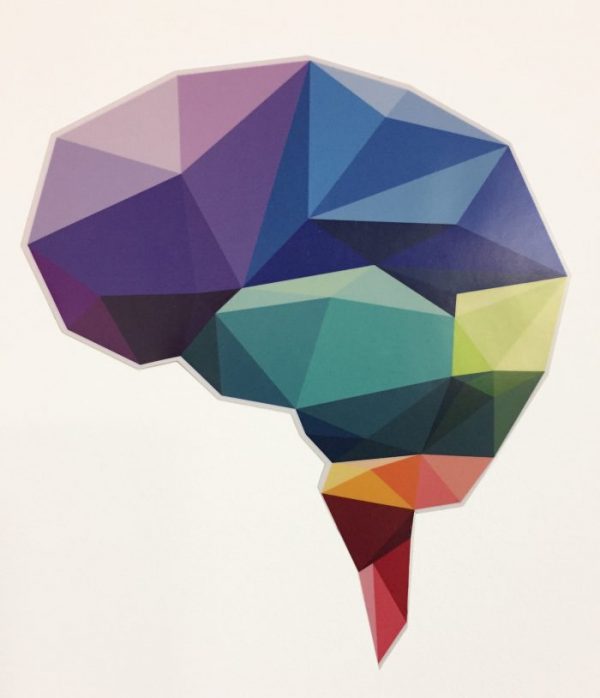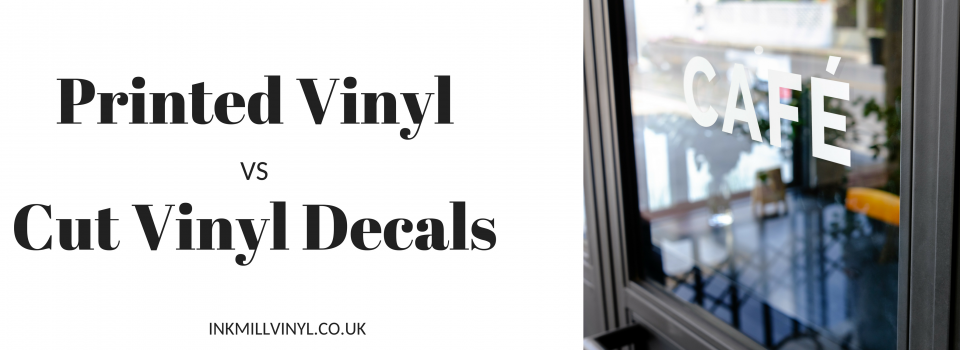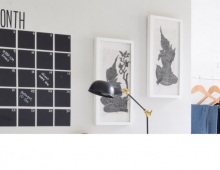Printed vinyl and cut vinyl decals are different methods of creating a vinyl sticker, offering different uses and effects. We’re looking at the differences between the two, and how each one works best, so that you can decide which method is the right one for you.
Printed Vinyl Stickers
How to make printed vinyl stickers
Laser or inkjet printers create printed vinyl stickers by digitally printing a design onto a sheet of adhesive vinyl. This can include an image and/or text, and takes on the form of a full colour process print. Printed vinyl stickers can match colours from Pantone, RGB or CMYK references, and you can recreate photographic images, images with shading, or graduated designs, rather than just line art. This means that you can create more complex designs. Digital printing can produce vast quantities, with savings made in labour.

This logo is an example of a printed vinyl sticker. The many different colours placed closely together would make this design complicated and time consuming to create as a cut vinyl decal, so it’s easier to print all of the colours onto just one piece of vinyl. We then cut this singular piece of vinyl into shape.
Printed vinyl is very easy to apply, as the whole design removes from the backing in a solid piece to apply to the surface.
Printed vinyl is not as weather hardy as cut vinyl, and consequently is more likely to fade over time if it is in direct sunlight. However, the vinyl can be treated with laminate to protect it from these effects.
When to use printed vinyl decals
- For an exact colour match; e.g. brand colours matched to Pantone or CMYK references
- For multicoloured logos and designs
- To create a photographic vinyl image
Cut Vinyl Decals
How to make cut vinyl decals
A specialist computer vinyl cutter called a plotter makes vinyl cut decals. The computer loads the graphic onto its system and follows the design using a sharp blade, which cuts out shapes and letters from sheets of vinyl. Our machines can only cut one piece of vinyl at a time, so multiple colours come in separate pieces which you would need to install individually.

The plotter cuts the designs out of sheets of vinyl
After cutting, the vinyl is ready for weeding. This is the process where a person picks out the pieces of vinyl which are the negative space in the design. This is always a manual process. Depending on the size of the vinyl panel and the complexity of the design, this can take a lot of time.
……………………………………………………………………..
The manual process of weeding out the negative space in a cut vinyl design. This example is creating vinyl lettering for a menu board.
A vinyl logo with layers of different colours
For cut vinyl decals, most designs are one solid colour. To create designs with multiple colours, different sections of coloured vinyl designs are layered together. This is a complex process and can be expensive to produce.
This is a simple example of a layered logo, with the white letters layered over the black vinyl. This method works when the wall colour is not part of the logo design. As you can see, the white letters sit on top of the black vinyl, which is placed on the blue wall behind the sticker.

Cut vinyl decals have more of a painted effect, because the vinyl is so thin that it looks seamless. Vinyl decals do not have a background because they are cut out, meaning that their background colour will simply be the surface behind them.
In terms of application, cut vinyl decals need a bit more care. Unlike printed vinyl, the designs will be in sections because they do not have a shared background. Whilst applying, ensure all the sections of the design adhere to the wall before removing the backing.
Cut vinyl is more resistant to sunlight and less likely to fade than printed vinyl, meaning it is ideal to use for outdoor signs or on shop window displays.
When to use cut vinyl decals
- For indoor wall logos and window displays which need to appear painted on
- Outdoors for weather resistant and fade resistant signage up to 10 years
- Single colour designs
You can take a look at some examples of decals and printed stickers on our Instagram for inspiration, and see some of our custom vinyl stickers on our website.





